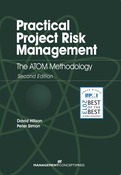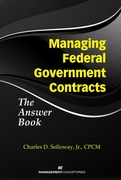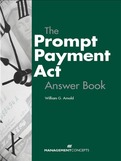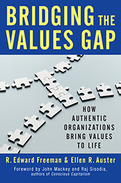Search Results: "building the future"
Results 529-534 of 1218
This second edition of the book reflects the authors' work to continually improve upon the model and to apply the methodology to a broader range of issues. The book includes:
• An entirely new chapter on managing risk in programs, which is an important dimension in today's world of ever more complex initiatives
• Updated material and methodology more closely aligned with relevant international standards
• Emphasis on minimizing the threats and maximizing the opportunities to optimize achievement of your project goals
Based on sound principles and best practices, this book guides any member of the project management team in conducting risk management in a real-world environment.
• An entirely new chapter on managing risk in programs, which is an important dimension in today's world of ever more complex initiatives
• Updated material and methodology more closely aligned with relevant international standards
• Emphasis on minimizing the threats and maximizing the opportunities to optimize achievement of your project goals
Based on sound principles and best practices, this book guides any member of the project management team in conducting risk management in a real-world environment.
Gangs of America
2005
The corporation has become the core institution of the modern world. Designed to seek profit and power, it has pursued both with endless tenacity, steadily bending the framework of law and even challenging the sovereign status of the state. Where did the corporation come from? How did it get so much power? What is its ultimate trajectory?
After he sold his successful computer book publishing business to a large corporation, Ted Nace felt increasingly driven to find answers to these questions. In Gangs of America he details the rise of corporate power in America through a series of fascinating stories, each organized around a different facet of the central question: "How did corporations get more rights than people?" Beginning with the origin of the corporation in medieval Great Britain, Nace traces both the events that shaped the evolution of corporate power and the colorful personalities who played major roles. Gangs of America is a uniquely accessible synthesis of the latest scholarly research, a compelling historical narrative, and a distinctive personal voice.The corporation has become the core institution of the modern world. Designed to seek profit and power, it has pursued both with endless tenacity, steadily bending the framework of law and even challenging the sovereign status of the state. Where did the corporation come from? How did it get so much power? What is its ultimate trajectory?
After he sold his successful computer book publishing business to a large corporation, Ted Nace felt increasingly driven to find answers to these questions. In Gangs of America he details the rise of corporate power in America through a series of fascinating stories, each organized around a different facet of the central question: "How did corporations get more rights than people?" Beginning with the origin of the corporation in medieval Great Britain, Nace traces both the events that shaped the evolution of corporate power and the colorful personalities who played major roles. Gangs of America is a uniquely accessible synthesis of the latest scholarly research, a compelling historical narrative, and a distinctive personal voice.
-
Just as Fast Food Nation revealed the sordid underside of the fast-food industry, Gangs of America tells the hidden story of how corporations gained their unprecedented power --- and what it means for you
- Written in an accessible, personable style that reflects the author's unique background as both a successful businessman and an engaged activist
The ultimate guide to naming your product or business has been updated throughout with twice as many resources as before, new stories (of both hits and flops), and an entirely new chapter on the power of names in the workplace.
Too many new companies and products have names that look like the results of a drunken Scrabble game (Xobni, Svbtle, Doostang). In this entertaining and engaging book, ace-naming consultant Alexandra Watkins explains how anyone—even noncreative types—can create memorable and effective brand names. No degree in linguistics required.
The heart of the book is Watkins's proven SMILE and SCRATCH Test. A great name makes you SMILE because it is Suggestive—evokes something about your brand; is Memorable—makes an association with the familiar; uses Imagery—aids memory through evocative visuals; has Legs—lends itself to a theme for extended mileage; and is Emotional—moves people.
A bad name, on the other hand, makes you SCRATCH your head because it is Spelling challenged—looks like a typo; is a Copycat—similar to competitors' names; is Restrictive—limits future growth; is Annoying—seems forced and frustrates customers; is Tame—feels flat, merely descriptive, and uninspired; suffers from the Curse of Knowledge—speaks only to insiders; and is Hard to pronounce—confuses and distances customers.
This 50 percent–new second edition has double the number of brainstorming tools and techniques, even more secrets and strategies to nab an available domain name, a brand-new chapter on how companies are using creative names around the office to add personality to everything from cafeterias to conference rooms, and much more.
Too many new companies and products have names that look like the results of a drunken Scrabble game (Xobni, Svbtle, Doostang). In this entertaining and engaging book, ace-naming consultant Alexandra Watkins explains how anyone—even noncreative types—can create memorable and effective brand names. No degree in linguistics required.
The heart of the book is Watkins's proven SMILE and SCRATCH Test. A great name makes you SMILE because it is Suggestive—evokes something about your brand; is Memorable—makes an association with the familiar; uses Imagery—aids memory through evocative visuals; has Legs—lends itself to a theme for extended mileage; and is Emotional—moves people.
A bad name, on the other hand, makes you SCRATCH your head because it is Spelling challenged—looks like a typo; is a Copycat—similar to competitors' names; is Restrictive—limits future growth; is Annoying—seems forced and frustrates customers; is Tame—feels flat, merely descriptive, and uninspired; suffers from the Curse of Knowledge—speaks only to insiders; and is Hard to pronounce—confuses and distances customers.
This 50 percent–new second edition has double the number of brainstorming tools and techniques, even more secrets and strategies to nab an available domain name, a brand-new chapter on how companies are using creative names around the office to add personality to everything from cafeterias to conference rooms, and much more.
You've Got Questions – We've Got Answers
Questions can arise at any point in the process of working with government contracts. Now, you have an accessible resource you can trust for authoritative answers.Managing Federal Government Contracts: The Answer Book covers the contract management process from planning to closeout and all the steps in between. Using the regulations and legislation as a basis, author Charles Solloway draws on his many years of experience to craft answers that will help you address the issues you face every day .
This book provides answers to the questions most commonly asked by government program and contracting personnel, contracting officer's representatives, contractor employees, inspectors, and all those involved in government contract management. The question-and-answer format makes getting the information you need quick and efficient. Examples of forms and templates drawn from actual contract work are included to make your work easier. Along with the basics on the roles of the various contract team members and the different aspects associated with each contract type, this resource covers:
• Partnering issues
• Data use for efficient contract management
• Remedial actions and how to properly initiate them
• The government's role with subcontractors
Don't let your questions go unanswered. Get Managing Federal Government Contracts: The Answer Book.
Questions can arise at any point in the process of working with government contracts. Now, you have an accessible resource you can trust for authoritative answers.Managing Federal Government Contracts: The Answer Book covers the contract management process from planning to closeout and all the steps in between. Using the regulations and legislation as a basis, author Charles Solloway draws on his many years of experience to craft answers that will help you address the issues you face every day .
This book provides answers to the questions most commonly asked by government program and contracting personnel, contracting officer's representatives, contractor employees, inspectors, and all those involved in government contract management. The question-and-answer format makes getting the information you need quick and efficient. Examples of forms and templates drawn from actual contract work are included to make your work easier. Along with the basics on the roles of the various contract team members and the different aspects associated with each contract type, this resource covers:
• Partnering issues
• Data use for efficient contract management
• Remedial actions and how to properly initiate them
• The government's role with subcontractors
Don't let your questions go unanswered. Get Managing Federal Government Contracts: The Answer Book.
Find the Answers You Need to Comply with the Prompt Payment Act!
It can be challenging for federal agencies to comply with the Prompt Payment Act. Although the basic rules are simple, they can be difficult to interpret and apply properly — until now. Designed as a reference, The Prompt Payment Act Answer Book lays out the prompt payment rules in a question-and-answer format, enabling readers to find answers to hundreds of specific questions. Practitioners will find the information they need to get and stay in compliance with the Prompt Payment Act and will benefit from real-world examples they can apply in everyday operations.
• Government payment personnel: Get advice on how to structure your processes to comply with prompt payment rules, avoid negative audit findings, and deal with contractor inquiries about interest entitlements
• Auditors: Structure your prompt payment audits and pertinent information effectively
• Contractors and vendors: Verify that your invoices are being handled properly, determine whether you are due interest penalties, and learn how to appeal improper payment amounts
Plus! Two quantitative sections show you how to calculate payment due dates and interest penalties, and two quizzes help reinforce learning.
It can be challenging for federal agencies to comply with the Prompt Payment Act. Although the basic rules are simple, they can be difficult to interpret and apply properly — until now. Designed as a reference, The Prompt Payment Act Answer Book lays out the prompt payment rules in a question-and-answer format, enabling readers to find answers to hundreds of specific questions. Practitioners will find the information they need to get and stay in compliance with the Prompt Payment Act and will benefit from real-world examples they can apply in everyday operations.
• Government payment personnel: Get advice on how to structure your processes to comply with prompt payment rules, avoid negative audit findings, and deal with contractor inquiries about interest entitlements
• Auditors: Structure your prompt payment audits and pertinent information effectively
• Contractors and vendors: Verify that your invoices are being handled properly, determine whether you are due interest penalties, and learn how to appeal improper payment amounts
Plus! Two quantitative sections show you how to calculate payment due dates and interest penalties, and two quizzes help reinforce learning.
Bridging the Values Gap
Business has a values problem. It's not just spectacular public scandals like Enron (which, incidentally, had a great corporate values statement). Many companies fail to live up to the standards they set for themselves, alienating the public and leaving employees cynical and disengaged—resulting in lower productivity, less innovation, and sometimes outright corruption.
The reason, argue top scholars and consultants Edward Freeman and Ellen Auster, is that all too often values are handed down from on high, with little employee input, discussion, or connection to the challenges and opportunities facing the organization. Although the words may be well-intentioned, they aren't reflected in the everyday practices, policies, and processes of the organization. This practically invites disconnects between intention and reality.
To bridge this gap between the “talk” and the “walk”, Freeman and Auster provide a process through which organizations can collectively surface deeply held values that truly resonate with everyone, from top to bottom. Their Values Through Conversation (VTC) process focuses on four key types of values conversations: introspective (reflecting on ourselves and how we do things in the organization), historical (exploring our understanding of our past and how it impacts us), connectedness (creating a strong community where we work well together), and aspirational (sharing our hopes and dreams).
By developing values through discussions—casual or formal, one-on-one or in groups—VTC ensures that values are dynamic and evolving, not static words on a wall or a website. Freeman and Auster offer advice, real-world examples, and sample questions to help you create values that are authentic and embraced because they are rooted in the lived experience of the organization.
Business has a values problem. It's not just spectacular public scandals like Enron (which, incidentally, had a great corporate values statement). Many companies fail to live up to the standards they set for themselves, alienating the public and leaving employees cynical and disengaged—resulting in lower productivity, less innovation, and sometimes outright corruption.
The reason, argue top scholars and consultants Edward Freeman and Ellen Auster, is that all too often values are handed down from on high, with little employee input, discussion, or connection to the challenges and opportunities facing the organization. Although the words may be well-intentioned, they aren't reflected in the everyday practices, policies, and processes of the organization. This practically invites disconnects between intention and reality.
To bridge this gap between the “talk” and the “walk”, Freeman and Auster provide a process through which organizations can collectively surface deeply held values that truly resonate with everyone, from top to bottom. Their Values Through Conversation (VTC) process focuses on four key types of values conversations: introspective (reflecting on ourselves and how we do things in the organization), historical (exploring our understanding of our past and how it impacts us), connectedness (creating a strong community where we work well together), and aspirational (sharing our hopes and dreams).
By developing values through discussions—casual or formal, one-on-one or in groups—VTC ensures that values are dynamic and evolving, not static words on a wall or a website. Freeman and Auster offer advice, real-world examples, and sample questions to help you create values that are authentic and embraced because they are rooted in the lived experience of the organization.
























